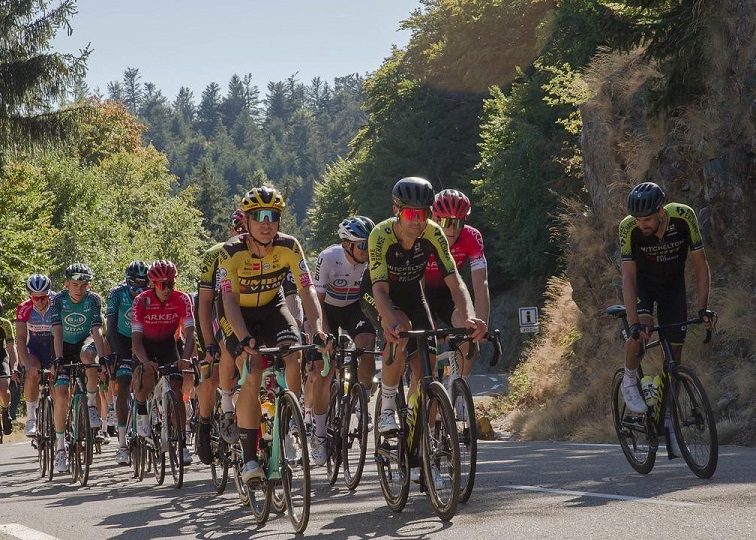People have been riding bicycles in groups in many countries for many years, enjoying varied sights and amazing places Mother Nature has to offer. Biking is much more entertaining when done in a competitive setting, as people may argue or simply want to know who among the group of riders is the best rider.
As a result, various bicycle riding tournaments have been established to provide bicycle riders with a competitive platform. The 2022 Tour de France is without a doubt the most prestigious and well-known cycling competition in the world.

Understanding The 2022 Tour de France: A Comprehensive Guide
Table of Contents
Below is the compiled key information needed to understand the 2022 Tour de France:
- What exactly is Tour de France?
- How does the Tour de France works?
- What should I be looking for in terms of strategies?
- What do the Different Jersey Colors Mean?
- What Are Some Of The Term Definitions?
- What is the best place to watch the Tour de France?
What exactly is Tour de France?
The Tour de France, sometimes known as “Le Grand Boucle” or “Le Tour,” is the world’s largest yearly sports event. It’s a cycling race that takes place every year throughout France (and occasionally in adjacent countries) and is divided into 21 stages with a total distance of around 3,500 kilometers.
This is a sport that attracts over 12 million spectators and 3.5 billion television viewers each year. It’s an exciting sport that’s also absolutely free to participate in.
This is the bicycle equivalent of the World Cup, Super Bowl, and Stanley Cup. Cyclists from all over the world descend on France to compete for the renowned Tour de France trophy and a monetary reward of €450,000 (about $500,000).
How does the Tour de France works?
The Tour de France is a team sport in which 198 cyclists compete in 22 nine-person teams. Cyclists cover a 3,500-kilometer race track over the course of 21 days, generally in July.
There are 21 stages of the Tour de France. Consisting of Nine flat stages, three hilly stages, seven mountain stages (including five summit finishes), two individual time trials, and two rest days make up the Tour de France.
Every day, one stage is run, which spans around 225 kilometers and takes about five and a half hours to complete. Each stage has a winner, and the overall winner is the rider who completes the most stages in the fewest amount of time.
What should I be looking for in terms of strategies?
Breakaways
Throughout the race, riders are highly strategic and do not pedal as fast as they can. They usually ride in a large group known as a peloton, with smaller groups breaking away to the front at nearly every stage. When cyclists lose momentum, the peloton will allow them to stay ahead for a few minutes before rejoining them. Breakaways are a wonderful strategy to adopt if a cyclist isn’t a particularly good climber or sprinter because they give them a chance to win.
Lead-out Trains
A tactic for preparing a rider for a sprint finish. One of the team’s riders rides at a fast speed, and the sprinter follows closely behind to take advantage of their slipstream. This minimizes wind resistance, allowing the sprinter to run faster without expending as much energy as they would otherwise.
Sprinters
A sprinter is a cyclist who finishes a race by quickly accelerating to a high pace, and who often saves energy by riding in the slipstream of another rider or a group of cyclists.
Attacks
Attacks are common on hills, and they include a cyclist breaking away from the peloton at a high rate in the hopes that the other riders will be unable to catch up.

What do the Different Jersey Colors Mean?
The majority of cyclists on the same team wear the same color jersey, while a chosen few wear unique jerseys.
The race’s leader wears a yellow jersey. The top sprinter wears a green jersey. The most impressive cyclist, aged 25 and under, wears a white jersey. The best climber wears a red and white polka-dot jersey.
The current national road champions get to wear their team’s jersey, which also includes their country’s colors, while the reigning World Champion gets to race in their team colors on a jersey with horizontal stripes.
What Are Some Of The Term Definitions?
Slipstreaming: Slipstreaming is the practice of riding closely behind another cyclist in order to benefit from less air resistance.
Domestique: Every team has a leader, and the remaining riders (domestiques) do everything they can to help the leader win stages, accrue points, and eventually win the tour.
Breakaway: A rider or group of riders who have separated from the pack to take the lead in the race.
Grand Départ: The Tour de France’s Grand Départ is the first stage.
Directeur Sportif: Each team has a director, known as a directeur sportif, who accompanies the cyclists throughout the race and provides them with directions, water, mechanical assistance, and replacement bikes.
Lanterne Rouge: The last rider in the general classification/tour is Lanterne Rouge, which means “red light” in French. This is not a derogatory term.
SAG Wagon: A vehicle that follows cyclists and picks them up when they are unable to ride due to injury, exhaustion, or bicycle failure, as well as carrying their belongings.
Musket Bag: A food and water-filled shoulder bag given to cyclists at feeding stations.
Flamme Rouge: The Flamme Rouge (French for “red flag”) is used to signify the race’s last kilometre.
Bonking: Bonking is another term for “hitting the wall.” This occurs when a cyclist has entirely depleted his or her energy.
Peloton: The word “peloton” comes from the French word “group.” The peloton is a large group of cyclists who ride together in order to maintain cohesion.
What is the best place to watch the Tour de France?
The Tour de France is televised in over 188 countries throughout the world, and over 3.5 billion people watch it each year, so finding a station will not be difficult. You’ll most likely be able to see it on your cable’s sports channels. If not, NBC Sports’ coverage of the Tour de France is the most reliable choice.
Visit the official website for more information at Official website of Tour de France 2022
Contact Us
If you have any suggestions or advise, please feel free to reach us via our Contact Us here.v
